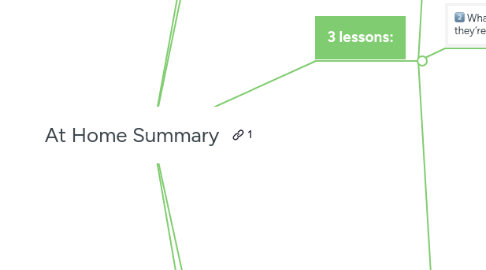
1. 1-Sentence-Summary:
1.1. At Home takes you on a tour of the modern home, using each room as occasion to reminisce about the history of its tradition, thus enlightening you with how the amenities and comforts of everyday life you now take for granted have come to be.
2. Favorite quote from the author:
2.1. "It is always quite thrilling to find yourself looking at a world you know well but have never seen from such an angle before." - Bill Bryson
3. 3 lessons:
3.1. Shoot the cans! The struggle for food lasted longer than you think.
3.1.1. Easy access to food is predicated on one thing: making it preservable. This process didn’t even start until the late 1700s.
3.1.2. A confectioner from Paris, Nicolas Appert, was the first to try and can foods, sealing them in containers made of glass with a wax seal.
3.1.2.1. However his seals weren’t really airtight, so the food could still be contaminated.
3.1.3. Bryan Donkin improved upon his concept, even launching the first commercial iron tin cannery, but wrought iron cans were heavy and almost impossible to open.
3.1.3.1. Some even came with instructions to open them with hammer and chisel, and soldiers, well, they just shot the cans open with their rifles!
3.1.4. The first true relief at scale came with the invention of the can opener as we know it today: in 1925.
3.1.5. What none of this accounts for is that people rarely knew with certainty what they were eating, as food labeling has been required by law only since 1990 (!).
3.1.5.1. Chalk was added to milk, dirt to tea and sand to sugar, to get more money out of less product.
3.1.6. We now live in good times!
3.2. Whatever sleeping problems you have, they’re not a big deal.
3.2.1. Today, mattresses are stuffed mainly with either springs or foam, and sometimes with a bladder filled with air or water.
3.2.2. None of these were invented until the early 1900s – so what did people put into their beds before?
3.2.2.1. Straw, feathers, horse hair, cotton, even sea moss and sawdust.
3.2.3. Bedbugs, moths, mice, rats and other rodents were all too common companions while trying to get some shut-eye back then.
3.2.3.1. When not all rustling beneath the sheets was of the good kind, you did well to keep a shoe close by, in case you needed to strike.
3.2.4. Speaking of reproductive activities, they were considered a mere practical act back then.
3.2.4.1. Having kids was good, but having fun while conceiving them? Nah-uh.
3.2.4.2. Women were told to avoid board games and reading, as those could arouse them, and since masturbation was also considered filthy and unhealthy, men had to keep their hands to themselves too.
3.2.4.3. Worse even, to avoid leaky “accidents” at night, a penile pricking ring for men was invented: if your wiener swelled at night, its sharp pins would prick it to kill the arousal
3.2.5. So the next time you think your mattress is too hard or too soft, remember: this is nothing compared to what people had to deal with just a few short decades ago.
3.3. Salt to survive, pepper ’cause it’s popular: why we spice things up.
3.3.1. Salt is crucial for human bodies to function.
3.3.2. Even though we’ve only known that for a comparatively short time, we’ve been consuming salt for thousands of years.
3.3.2.1. Some ancient, indigenous people went as far as drying urine to extract it.
3.3.2.2. For many kings, amassing lots of salt was also a sign of power.
3.3.3. There was one condiment with which it was even easier to show how wealthy and mighty you were: pepper.
3.3.3.1. Originally popularized by the ancient Romans, who couldn’t get enough of this stuff, prices reached crazy heights even back then.
3.3.3.2. At one point, they offered an invading army as much as 3,000 pounds of pepper as a peace agreement.
3.3.3.3. In 1468, the Duke of Bourgogne used pepper as a decoration for his wedding: 380 pounds of it!
3.3.3.4. We’ve gotten smarter about using pepper more resourcefully, but it remains, to this day, a little status symbol atop our kitchen tables.
